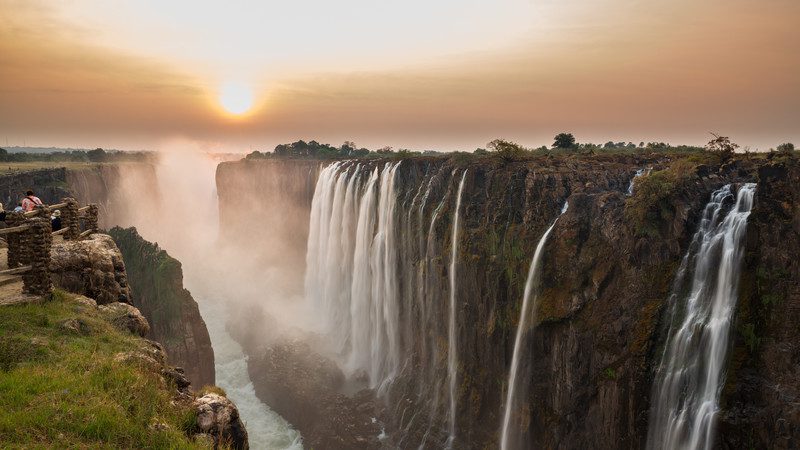Zambezi River significance

Africa, the cradle of life, boasts an array of natural wonders that have intrigued explorers, scientists, and adventurers for centuries. Among these wonders, the Zambezi River stands tall as one of the continent’s most significant and captivating rivers. Stretching over 2,574 kilometers through six countries, the Zambezi is not just a river but a lifeline that sustains ecosystems, economies, and cultures across Southern Africa. In this blog post, we will unravel the reasons behind the Zambezi River’s status as one of Africa’s most vital and remarkable waterways.
The Geographical Splendor
The Zambezi River’s journey begins in northwestern Zambia, where it meanders through pristine wilderness and diverse landscapes. The river carves its path through lush rainforests, arid savannas, and dramatic gorges, offering breathtaking scenery at every turn. As it flows toward the Indian Ocean, the Zambezi forms a variety of features that add to its allure, including cascading waterfalls, expansive floodplains, and tranquil lakes. The Zambezi’s sheer geographical diversity makes it an epicenter of natural beauty and ecological significance.
The Victoria Falls: A Natural Wonder
No discussion about the Zambezi River would be complete without mentioning the awe-inspiring Victoria Falls. Often referred to as “The Smoke That Thunders,” this colossal waterfall is one of the most renowned natural wonders on Earth. The Zambezi River plunges over 100 meters into a narrow gorge, creating a spectacle of mist, rainbows, and thunderous roars. Victoria Falls is not only a visual masterpiece but also an essential part of the Zambezi’s ecosystem, influencing weather patterns, wildlife habitats, and local livelihoods.
Biodiversity and Conservation
The Zambezi River basin is a hotbed of biodiversity, teeming with a rich array of flora and fauna. The river and its surrounding wetlands provide a vital habitat for numerous species, including elephants, hippos, crocodiles, and countless bird species. Its diverse ecosystems support both aquatic and terrestrial life, making it a critical area for conservation efforts. Several national parks and protected areas within the Zambezi basin, such as Lower Zambezi National Park and Kafue National Park, serve as strongholds for wildlife preservation.
Sustaining Local Communities
Beyond its natural splendor, the Zambezi River plays a pivotal role in the lives of countless people living along its banks. Indigenous communities and diverse ethnic groups have thrived for generations by harnessing the river’s resources for food, water, and transportation. The river serves as a source of sustenance for agriculture and fishing, fostering self-reliance and livelihoods in rural areas. Moreover, the Zambezi’s waters have historically facilitated trade and cultural exchange among different societies, creating a vibrant tapestry of traditions and customs.
Economic Significance
The Zambezi River is not only a lifeline for local communities but also a cornerstone of regional economies. It serves as a crucial transportation route for goods and people, connecting landlocked countries like Zambia and Zimbabwe to international markets through the port of Beira in Mozambique. The river’s potential for hydropower generation has been harnessed through projects like the Kariba Dam, providing electricity to several nations. Additionally, tourism along the Zambezi, centered around attractions like Victoria Falls and river safaris, contributes significantly to the economies of Zambia, Zimbabwe, and beyond.
Hydroelectric Power Generation
The Zambezi River’s hydroelectric potential is a game-changer for the region’s energy needs. The Kariba Dam, constructed in the mid-20th century, remains one of Africa’s largest dams and a vital source of electricity for Zambia and Zimbabwe. Furthermore, the ongoing construction of the Grand Inga Dam in the Democratic Republic of Congo has the potential to become the world’s largest hydropower project. Such initiatives harness the Zambezi’s immense energy to drive industrialization, promote economic growth, and improve living standards for millions.
The Zambezi River: Africa’s Mighty Lifeline
In conclusion, the Zambezi River stands as a testament to the profound influence of nature on Africa’s landscape, culture, and development. Its geographical diversity, the magnificence of Victoria Falls, its role in biodiversity conservation, and its significance for local communities and economies all contribute to its status as one of Africa’s most significant rivers. The Zambezi River continues to inspire wonder and appreciation for the natural world while simultaneously sustaining the livelihoods of millions of people. As we celebrate the Zambezi, we acknowledge the need for responsible stewardship to ensure that this magnificent lifeline endures for generations to come.




